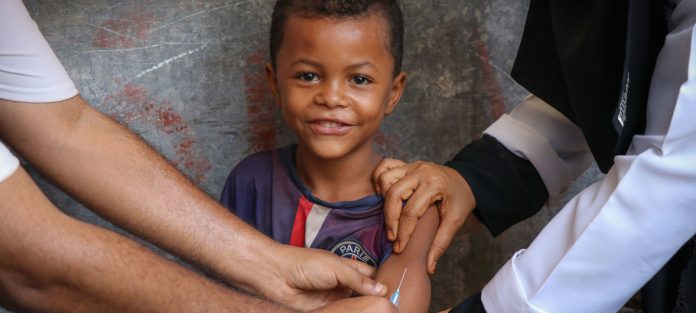Dailynewsun News Desk
Measles killed an estimated 207,500 people last year after a decade-long failure to reach optimal vaccination coverage, resulting in the highest number of cases for 23 years.
A joint report by the World Health Organization (WHO) and US Centers for Disease Control (CDC) disclosed the information on Thursday.
The death toll in 2019 was 50 percent higher than a historic low reached in 2016, and all WHO regions saw an increase in cases, adding up to a global total of 869,770.
This year there have been fewer cases, but the COVID-19 pandemic has further set back vaccination efforts, with more than 94 million people at risk of missing measles vaccines in 26 countries that have paused their vaccination campaigns, including many countries with ongoing outbreaks.
Measles crisis still prevails
“Before there was a coronavirus crisis, the world was grappling with a measles crisis, and it has not gone away”, Henrietta Fore, UN Children’s Fund (UNICEF) Executive Director, said in a statement. “While health systems are strained by the COVID-19 pandemic, we must not allow our fight against one deadly disease to come at the expense of our fight against another.”
Measles is entirely preventable, but success requires 95 per cent of children to be vaccinated on time with two doses of measles-containing vaccines (MCV1 and MCV2). MCV1 coverage has been stagnant globally for more than a decade at between 84 and 85 per cent, while MCV2 coverage has been steadily increasing but is still only at 71 percent.
Natasha Crowcroft, senior technical advisor on measles and rubella at the WHO, said that the good news was that measles vaccinations had saved more than 25.5 million lives globally since 2000. But the low vaccine coverage meant the number of unprotected children was growing every year.
Stalled coverage
“The big issue is not actually large holes in coverage, it’s the stalling in coverage”, Dr. Crowcroft told a news conference in Geneva.
“It’s a bit like, you know, tinder for a forest fire, it reaches a point where an outbreak really takes off. And that’s what we saw in 2019, with the almost explosive outbreaks in areas that have had inadequate coverage over many years”, Dr. Crowcroft said.
“If you have coverage around about that 80 per cent level, then you get the sense that things are going okay, but they’re not really, and eventually you see these large outbreaks.”






























